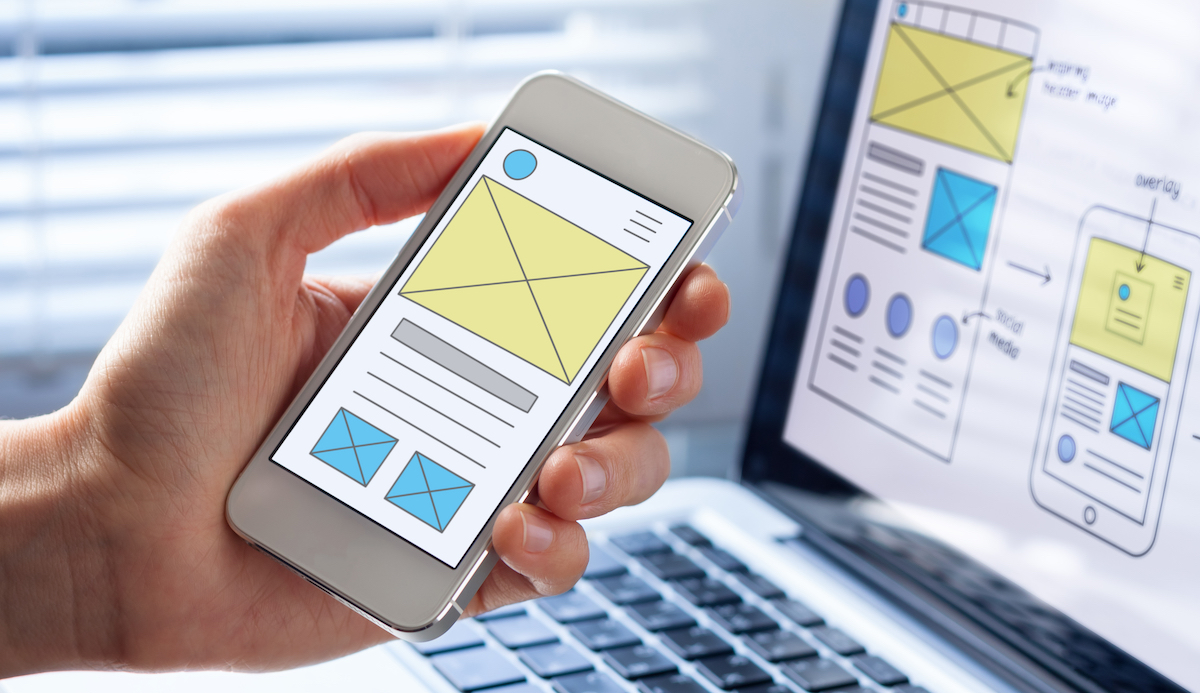UX and UI: hand in hand for the best outcome
There is not a single manual, lecture or blog on website development ignoring the importance of UX UI design. In this post, we are going to explore what the two terms mean, what are the differences between them and why you can't talk about one without the other.
What is UX design?
The term UX is an acronym, a two-letter version of User eXperience. As the expression suggests, it refers to the sensations users experience when browsing a webpage or using an application.
The focus of the UX is the consumer, the so-called user, and the aim is to make it as easy and as understandable as possible for them to navigate through the site, get the information they need and ultimately leave satisfied. The user is on a journey to purchase/order/login, and the UX is there to make their overall experience a pleasant one. This requires the UX designer to understand the business goal and the behaviour of the target groups to reveal their needs and thoughts. This is where development experience, surveys and pre-development research help enormously.
What is a good UX?
A good UX design is simple, not overwhelming, to the point, not cluttered. It has all the elements users require, but no more and no less. A well-designed UX fits the strategic objectives while remaining logical and simple to use.
Visuality is a key factor in the user experience. Well-applied aesthetic elements and trending visual branding guidelines are key determining factors of the final user experience, something UX cannot ignore.
What is UI design?
UI, or User Interface, refers to the visual presentation of a website.
It aims to present all content, text, photos, graphics, or videos, to visitors in a way that grabs their attention. It is a very complex area, which overlaps at some points with elements of UX. For example, UI incorporates the use of visuals, buttons, labels, and various icons.
The UI is therefore about creating a visual language that is specific to a brand and that the audience can understand.
What is good UI design?
A well-designed user interface is intuitive and helps information gathering. Ideally, users don't have to think for long minutes about getting back to the main page or checking the elements of a shopping cart. Webpage content is not overwhelming and structure elements are logically linked.
The user expects observable and intuitive website structure with clear call-to-actions which allows them to navigate smoothly between sub-pages, topics or products. If they experience a deviation from this, they may become confused and search for alternative web pages. For example, when a visitor wants to return to the main page, they typically click on the logo in the header, or if they are looking for broader topics they turn to the menu navigation.
To develop UI properly, you need to know your target audience and their pain points. It's also worth assessing the competition. It's not a good idea to steal, but it's not forbidden to be inspired. It is especially crucial when very specific products or services are involved, and customers are used to certain well-established market trends.
When designing the UI, developers must ensure that colours, icons, fonts, buttons, menu items are consistent across all interfaces, in all views, and that they apply the same logical structure.
What are the differences and where do UX and UI meet?
Although UX and UI have different focuses, they ultimately work for the same goal. The former's function is to ensure that the visitor has a good experience when using the site or application, and the latter provides functional support.
If the UI is not accompanied by the UX, the underlying idea and the envisaged business goal might be lost. The UX's responsibility is to uncover the problems of the target audience, and the UI presents this in a pleasing form.
In practice, the UX design is done first. This includes the path that the user will take, and then the UI design is used to bring this to life with colours, visual elements, and interactive details. But throughout the process, designers need to be in constant contact and consultation. The UX designers provide wireframes and prototypes to the UI designers, who develop the final look based on the previously created mood boards.
There are differences between UI and UX, but the two are not separable. In fact, the two are reinforcing each other. It is useless to make a website look good if it is not user-friendly, and vice versa. Imagine an order button with a badly selected font colour.
Why should you put so much effort into UX and UI design?
Long story short: to outperform competition and gain market share with your company webpage. This is reflected in the stats: a Forester survey found that good UI design can increase conversion rates by 200% and good UX design by 400%.
UI and UX design are very popular fields in web development. They are the tools to stand out from the crowd. The more you understand your users, the better the website or app you can create, and the more your target audience will behave as expected.
Make the best of it! At SynerinSoft, we will design and build the best solution for you, based on your budget!





